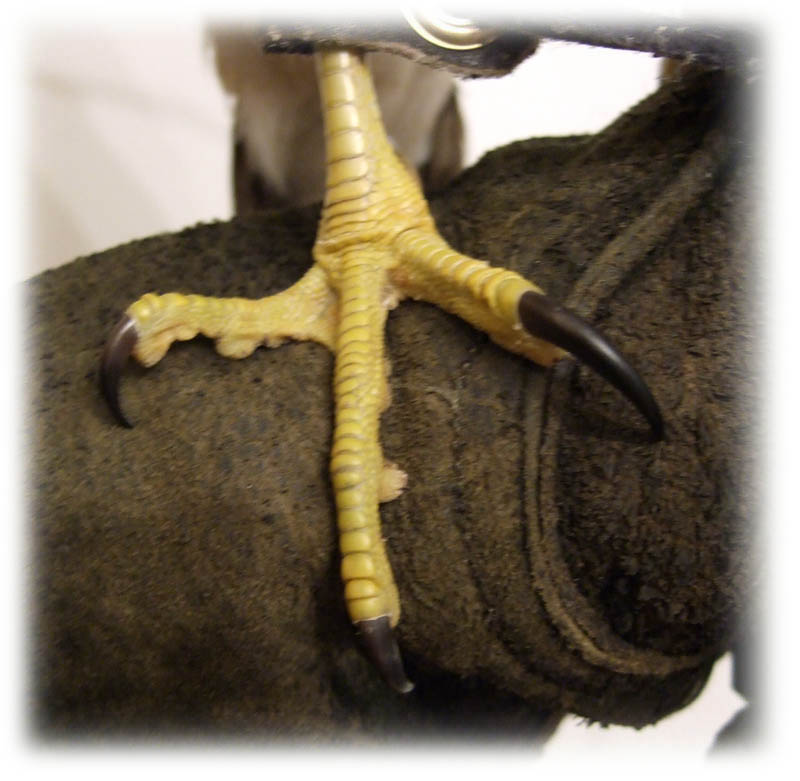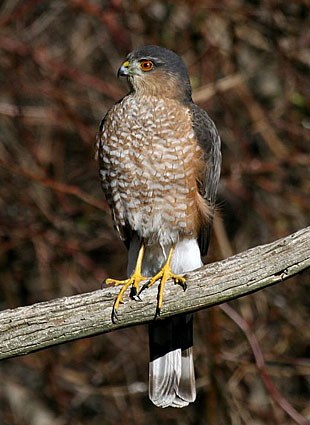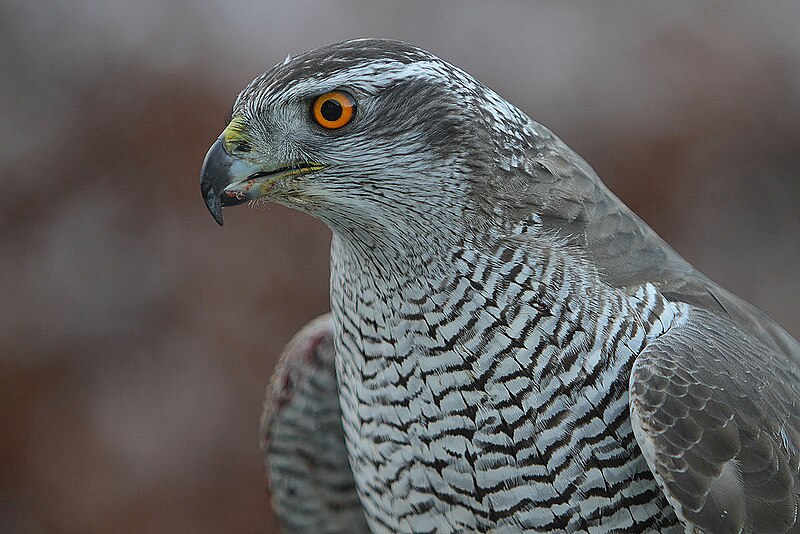 |
| hawkmountain.org |
Their proportions allow them to zip through tiny spaces, narrow gaps, and complex paths without colliding with things. Why do accipiters need that adaptation? Because they are bird-eating-birds.
That's what really makes an accipiter an accipiter--it all comes down to eating other birds. And since prey-birds are fast, accipiters have to be fast, too, hence the odd proportions and speed-demon tendencies. It's like they live on fast-forward: fast heartbeats, high metabolisms, rapid wingbeats, zippy flight, darting movements, quick escapes, and lightning feet.
Their feet are particularly cool. Now, as a Great Horned Owl, I'm rather fond of my own feet--they're covered all the way to the toes in warm feathers. But if I had to choose another birds' feet to have for a day, it would be accipiter feet. Specifically Cooper's Hawk feet (sized up appropriately, of course). I mean, look at these things! See how long the toes are?
 |
| themodernapprentice.com |
The toes are like that so the Cooper's Hawk can wrap its feet around a little bird in flight and be sure to not let it slip away. And like I said, their feet are fast: I've heard more than one Human yelp when an accipiter's foot got loose!
Now that I've covered accipiters in general, let's touch on each of the three local species in brief:
Sharp-Shinned Hawk:
Sharpies are the smallest of the local accipiters. They're just 9-15 inches long, including the super-long tail. Like most raptors, the females are larger than the males, but in accipiter species like Sharpies the difference can be huge, up to 50% heavier for females! They may be small, but they're tough as nails, and they take down prey ranging from hummingbirds to grouse. If you have a bird feeder in your yard, you'll probably attract Sharpies as well...gives a double meaning to bird feeder! They live in forested areas like dense conifer stands. They are called "Sharp-Shinned" because of a small ridge that runs down the front of each leg.
 |
| allaboutbirds.org |
Cooper's Hawk:
Coopers are just a tiny bit bigger than the Sharpies, with a lot of overlap between the sexes of each species. They prefer slightly more open forest, and are being found more and more in cities (where delicious doves and pigeons live...and the birds at your bird feeder). Despite being a little bigger than Sharpies, they're just as nimble, quick and high-energy. As a side note: the Cooper's was named by French naturalist Charles Lucien Bonaparte, nephew of Emperor Napoleon Bonaparte. He named the bird after New York naturalist William Cooper.
 |
| allaboutbirds.com |
Now, for something fun about Coopers Hawks and Sharp-Shinned Hawks: they look almost identical! Twinsies! There are some subtle differences, like Cooper's Hawks have a round tail tip (C shaped for Coopers) and Sharpies have straight tails; Cooper's sometimes have a small crest on their heads...other than that there's not a lot to go on.
 |
| photos from allaboutbirds.com |
Northern Goshawk:
The last of the three US accipiters is the Northern Goshawk. We don't see a whole lot of these birds come through our doors at the RMRP, but the Humans get pretty excited when it happens. They're such cool birds! And they're considerably different than the "twins" pictured above. Not only do they look different, they behave differently. For one, they're much more aggressive, territorial and stubborn than the smaller accipiters. They also hunt differently, dropping on their prey from above, but doing so in forests where there's a lot of clutter between them and their prey. They don't care, they just dart/barrel through it. Also, instead of only eating birds, they're big fans of squirrels, rabbits and even big ol' hares. They live in remote, undisturbed forests, so if you ever see a Goshawk in the wild, consider yourself lucky. Or in danger. They are very aggressive birds.
 |
| wikipedia.com |
If you want to see how cool Goshawks really are, take a peek at this video of one flying through tiny, tight spaces: http://www.youtube.com/watch?v=2CFckjfP-1E
Alright, that's all I have on accipiters! What would you like to read about next week? Let me know in a comment, or send an email to talonsofdoom@gmail.com.

Your concept of Northern goshawks is faulty. Goshawks have been moving into cities and suburbs for many years. Please heed- my ebook "The man who saw too many goshawks" is available from www.smashwords .com. The best - Nelson Briefer.
ReplyDelete